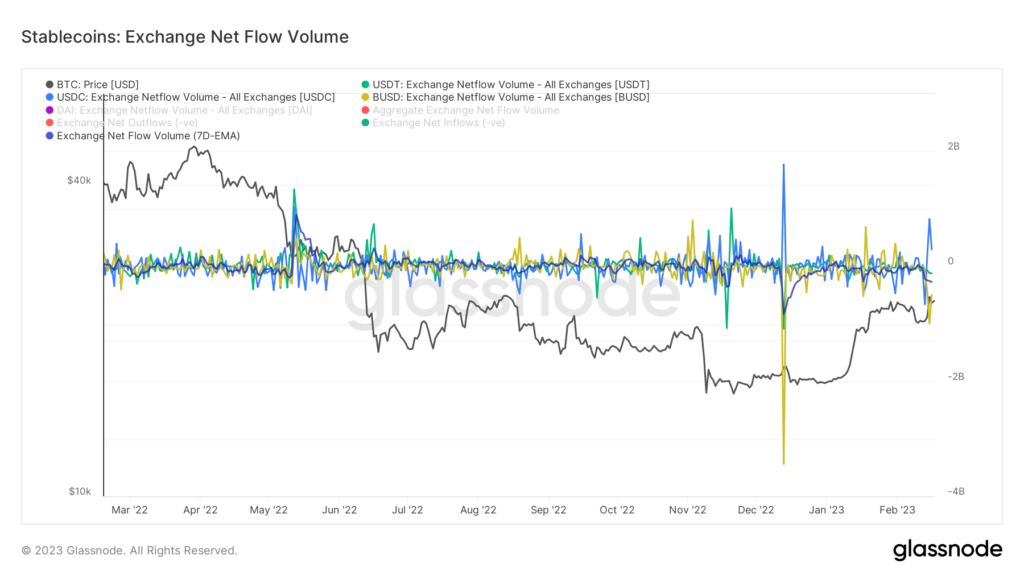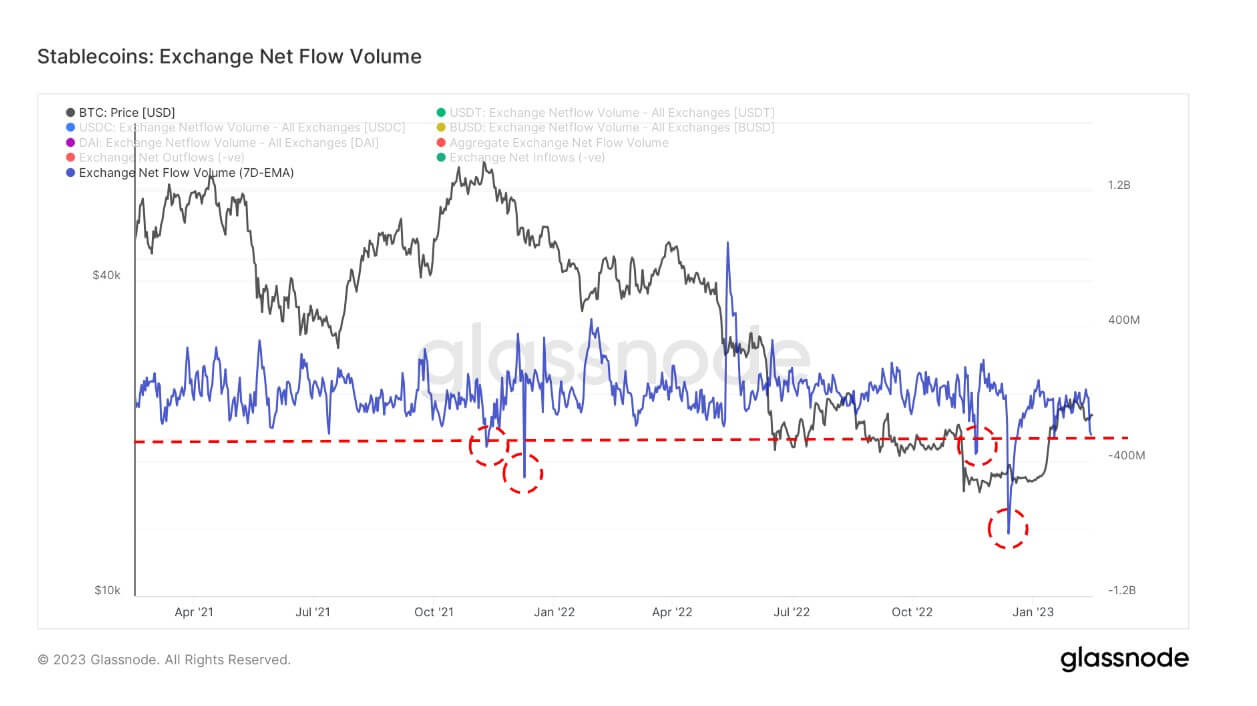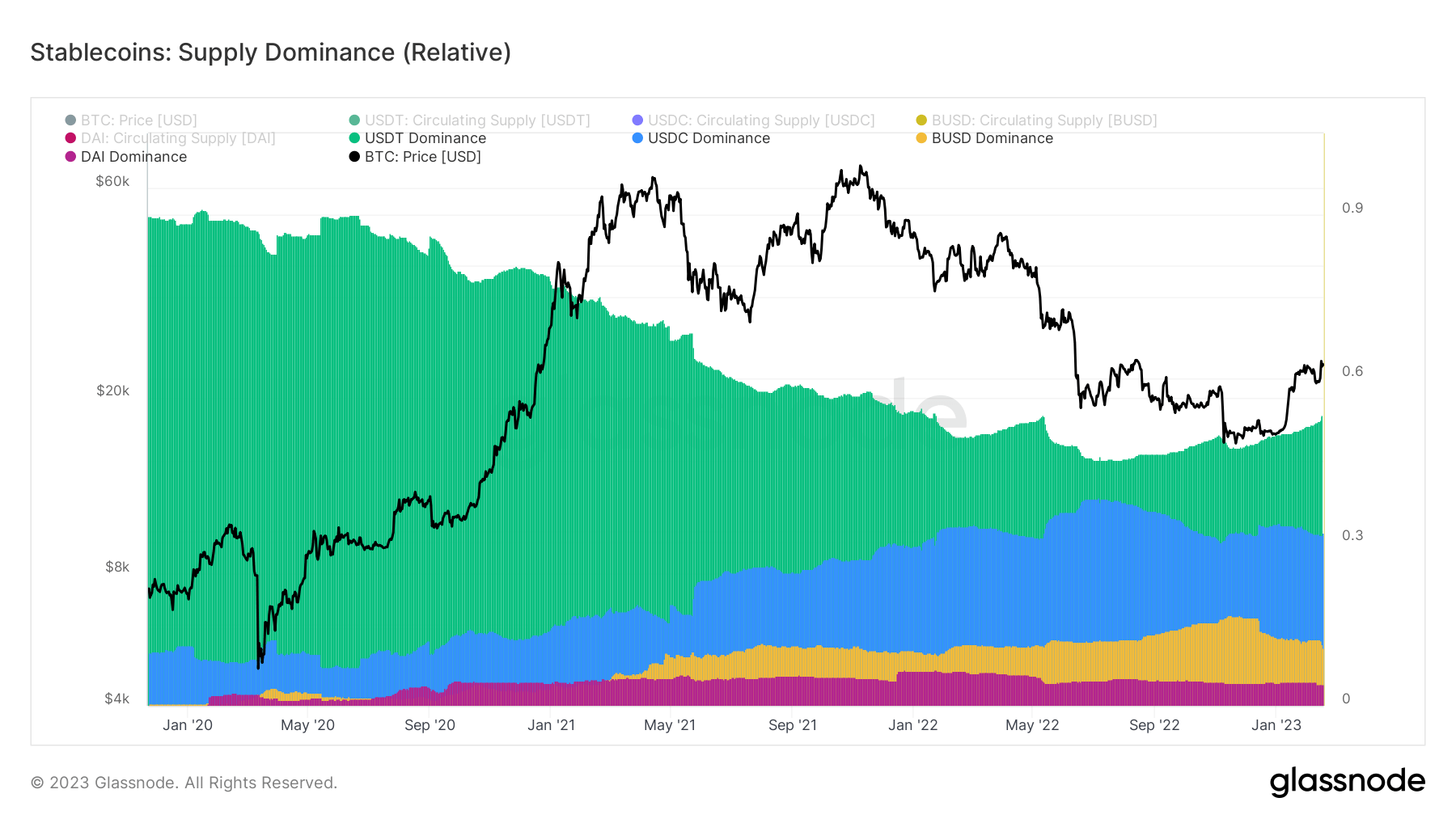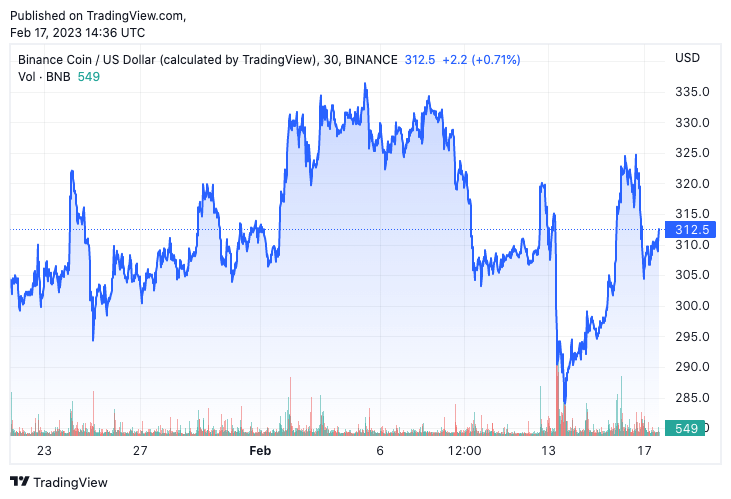Paxos faces SEC lawsuit over BUSD
On Feb. 13, the U.S. Securities and Exchange Commission (SEC) enforcement division issued a Wells notice to Paxos, ordering the company to stop minting the Binance USD (BUSD) stablecoin.
The notice followed an SEC investigation into Paxos and its relationship with Binance, whose stablecoin it issued, which concluded that the company violated securities laws. However, a Wells notice doesn’t necessarily mean that the SEC will take enforcement action against Paxos. For the SEC to pursue this matter further, its five commissioners must vote to authorize any enforcement litigation or settlement.
According to the notice, the Department of Financial Services (DFS) ordered Paxos to stop minting BUSD due to “several unresolved issues related to Paxos’ oversight of its relationship with Binance.” There were no further explanations of these issues — the CEO of Binance, Changpeng Zhao, said he was only aware of the enforcement action through the media.
Paxos is expected to submit a response to the Wells notice and present its case as to why it should not be sued. In the meantime, the company must stop minting new BUSD and enable all customers to redeem their BUSD for U.S. dollars. Paxos has maintained that it has and always will back all BUSD tokens 1:1 with U.S. dollar-denominated reserves.
BUSD is the only stablecoin backed by long-term maturity assets
These dollar-denominated reserves, however, are far from the norm. Paxos’ unaudited BUSD holdings report shows that the stablecoin is backed mainly by long-term maturity assets. On Feb. 10, the company’s report showed 16.14 billion outstanding BUSD tokens and an equal or higher balance of assets held in custody.
Just under $3.1 billion is held in short-term U.S. Treasury Debt, which will mature by mid-April 2023.
On Feb. 10, $12.5 billion of Paxos’ $16.4 billion BUSD reserves were held in U.S. Treasury Reverse Repurchase Agreements. Only two repurchase agreements mature in 2023 and 2024 — the rest of the $12.5 billion have maturity dates ranging from 2026 to 2052.

$1 billion worth of stablecoins leave Ethereum
The scrutiny over BUSD caused unprecedented FUD in the market. This was evident in the massive outflows of stablecoins from exchanges – since Feb. 13, over $1 billion worth of various stablecoins left the Ethereum network.
The majority of this loss can be attributed to BUSD, which saw the total number of outstanding tokens decrease by around 700,000 between Feb. 10 and Feb. 14.

This is the fifth-largest outflow of stablecoins on Ethereum in the past two years. And while the $271 billion in outflows recorded on Feb. 16 are a fraction of the $830 billion recorded on Dec. 13, it still shows the impact the SEC’s probe into Paxos has on the market.

BUSD sees its dominance decrease
Being the third-largest stablecoin by market cap, any changes in volume BUSD experiences are bound to impact the rest of the stablecoin sector profoundly. The coin has decreased its dominance from 17%, recorded in November 2022, to 12% on Feb 14.

The same goes for the top-ranked stablecoins, USDC and DAI, both of which have seen decreased market dominance since the beginning of the year.
A reverse trend can be observed in USDT. Tether’s stablecoin has seen its dominance increase since November 2022, surpassing 53% on Feb 15, 2023.

Changpeng Zhao, the CEO of Binance, said that the SEC’s order to Paxos will cause BUSD’s market cap to decrease over time. While Paxos will continue to service the product, the market expects the redemptions will continue to deplete BUSD’s supply even further until a decision from the SEC is made.
Until then, we could see USDT’s market cap and sector dominance increase even further. The largest stablecoin by market cap, USDT, has already seen a notable inflow since SEC’s probe into Paxos.
Tether’s stablecoin saw a significant increase in liquidity on Binance last September when the exchange delisted USDC, USDP, and TUSD-denominated pairs from the platform. The move aimed to improve price discovery and the overall liquidity on the exchange. However, many saw it as Binance’s attempt at achieving vertical integration, as most of its trading pairs – and the most liquid ones — were tied to BUSD.
The share of BUSD pairs on Binance has been growing steadily since its launch in late 2019 but has seen notable increases since the exchange delisted USDC, USDP, and TUSD.

As BUSD’s market cap declines, we can expect the share of BUSD pairs on the exchange to drop even further. And while there hasn’t been a notable increase in the share of USDT pairs on the exchange, there is a chance it could increase by the end of the quarter.
Binance’s troubles with maintaining stablecoin peg reserve
The SEC’s enforcement action against Paxos is set to have a negative effect on Binance. The SEC’s notice cited Paxos’ relationship with the exchange as the reason behind the enforcement. And while Binance isn’t based in the U.S. and thus isn’t subject to U.S. regulation, targeting BUSD has certainly shaken the market’s confidence in the exchange.
Since it witnessed historical withdrawals in November 2022 following the FTX collapse, Binance has been under heavy scrutiny. In January this year, the exchange acknowledged it failed to maintain the reserves of Binance-peg BUSD, a stablecoin it issues on other blockchains whose value is pegged to the Paxos-issued BUSD on Ethereum.
Data compiled by blockchain analytics company ChainArgos and analyzed by Bloomberg showed that the Binance-peg BUSD was frequently undercollateralized between 2020 and 2021. On three separate occasions, the gap between BUSD reserves held by Binance and the supply of Binance-peg BUSD surpassed $1 billion.
The exchange has acknowledged its past troubles in maintaining the reserve for Binance-peg BUSD and said it has since improved the process with enhanced discrepancy checks to ensure the token is backed 1:1 with BUSD.
BNB begins slow recovery
Binance’s native token, BNB, hasn’t been immune to the Paxos news.
The token saw its price drop by over 11% in less than 24 hours as investors mulled over the prospect of increased regulatory scrutiny into Binance. However, the slip in confidence seems to have been short-lived, as BNB regained most of its losses on Feb. 16, jumping by over 9% since the Feb. 13 news.

Conclusion
The full effects of the SEC’s probe into Paxos are yet to be felt.
If the SEC decides to take enforcement action against Paxos and take it to court over securities law violations, the market could enter into a period of unprecedented volatility. Many analysts have argued that BUSD doesn’t pass the Howey Test, a set of criteria set by the SEC to determine whether an asset classifies as a security. If the Commission continues to pursue the matter in court, it could set a precedent for the rest of the crypto industry and threaten all other major stablecoin issuers.
Increased regulatory uncertainty could destabilize the market, which has just begun a slow recovery from the collapse of FTX. It could also drastically change the crypto landscape in the U.S., as many companies could seek to set their roots in a more regulatory-friendly environment.
Read More: cryptoslate.com









 Bitcoin
Bitcoin  Ethereum
Ethereum  Tether
Tether  XRP
XRP  Solana
Solana  USDC
USDC  Dogecoin
Dogecoin  TRON
TRON  Cardano
Cardano  Lido Staked Ether
Lido Staked Ether  Wrapped Bitcoin
Wrapped Bitcoin  Hyperliquid
Hyperliquid  Sui
Sui  Wrapped stETH
Wrapped stETH  Chainlink
Chainlink  Avalanche
Avalanche  Stellar
Stellar  LEO Token
LEO Token  Bitcoin Cash
Bitcoin Cash  Toncoin
Toncoin  Shiba Inu
Shiba Inu  Hedera
Hedera  USDS
USDS  WETH
WETH  Litecoin
Litecoin  Wrapped eETH
Wrapped eETH  Polkadot
Polkadot  Monero
Monero  Binance Bridged USDT (BNB Smart Chain)
Binance Bridged USDT (BNB Smart Chain)  Ethena USDe
Ethena USDe  Bitget Token
Bitget Token  Pepe
Pepe  Pi Network
Pi Network  Coinbase Wrapped BTC
Coinbase Wrapped BTC  WhiteBIT Coin
WhiteBIT Coin  Aave
Aave  Uniswap
Uniswap  Dai
Dai  Bittensor
Bittensor  Ethena Staked USDe
Ethena Staked USDe  Aptos
Aptos  NEAR Protocol
NEAR Protocol  Cronos
Cronos  OKB
OKB  Jito Staked SOL
Jito Staked SOL  BlackRock USD Institutional Digital Liquidity Fund
BlackRock USD Institutional Digital Liquidity Fund  Internet Computer
Internet Computer  Ondo
Ondo  Ethereum Classic
Ethereum Classic